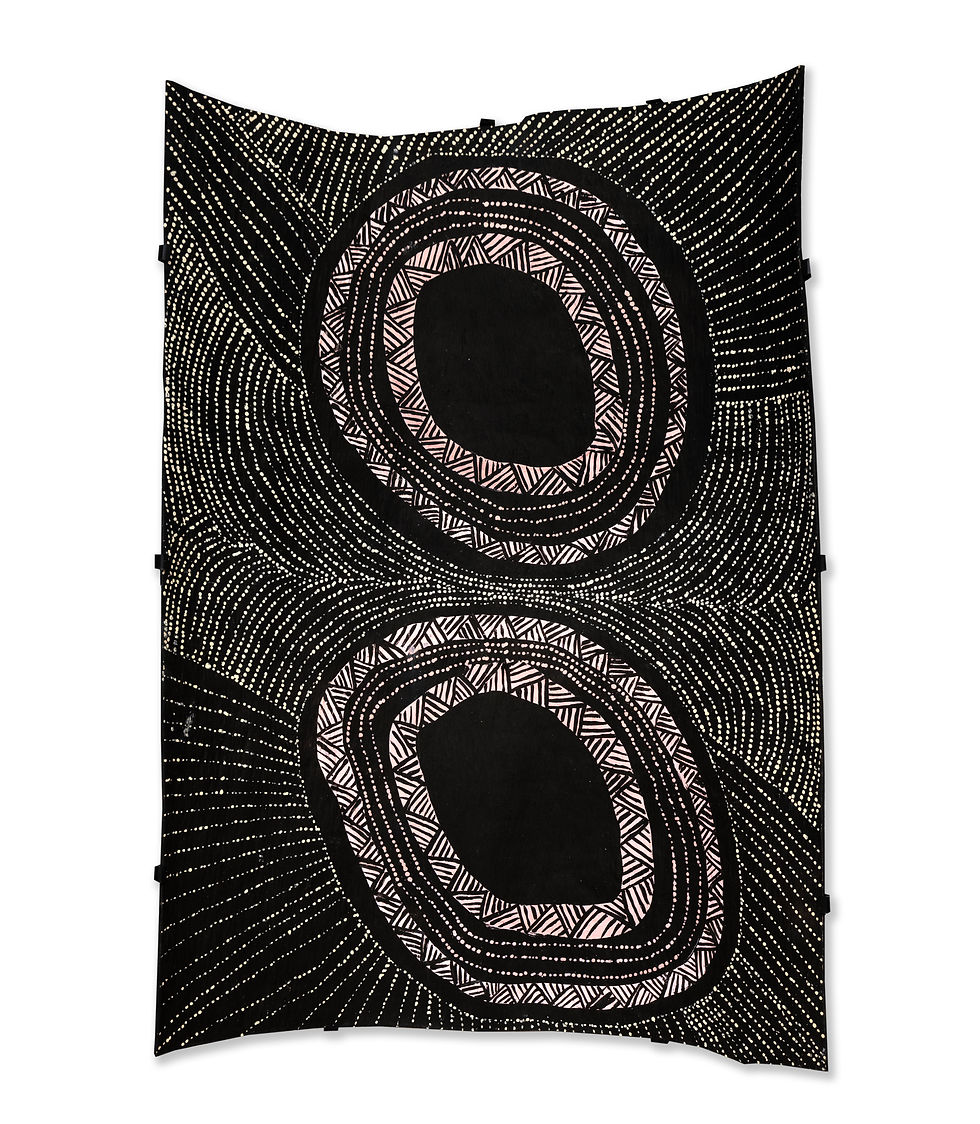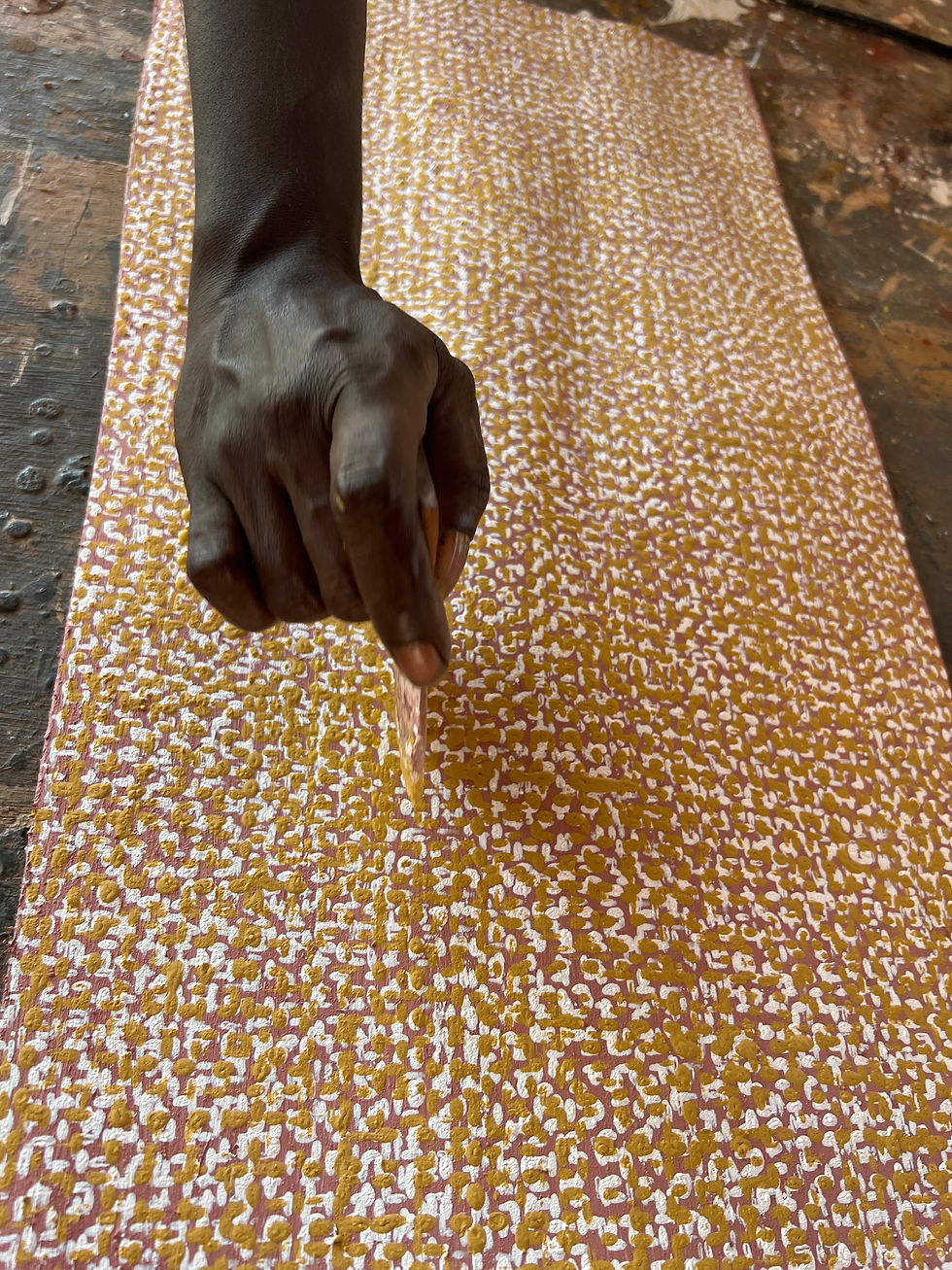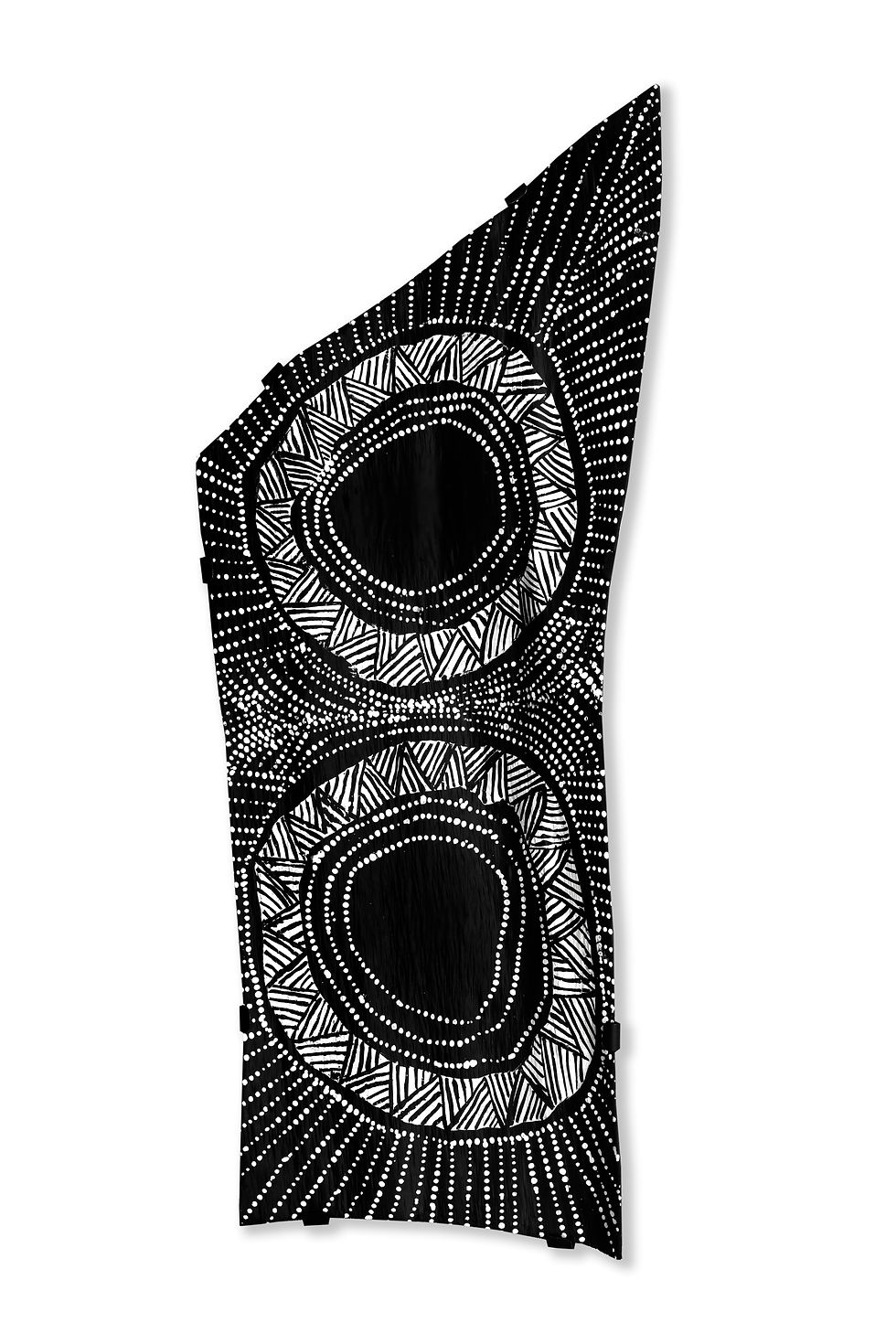VALDA NAPANGARDI GRANITES - NGALIYIPI JUKURRPA (SNAKEVINE DREAMING) - MINA ...
VALDA NAPANGARDI GRANITES
NGALIYIPI JUKURRPA (SNAKEVINE DREAMING) - MINA MINA, 2023
76 x 30 cm
Synthetic Polymer Paint on Belgian Linen
REGION
Yuendumu, NT
PROVENANCE
Warlukulangu Artists Aboriginal Corporation, NT Cat No:1108/23
Cooee Arts, NSW
STORY
This ‘ngalyipi Jukurrpa’ (snakevine [Tinospora smilacina] Dreaming) comes from Mina Mina. Mina Mina is an extremely important ceremonial site for Napangardi and Napanangka women that is located approximately 600kms west of Yuendumu, just east of Lake Mackay and the WA border. The area has a ‘marluri’ (salt lake or claypan) that is usually dry, without water. There are also a number of ‘mulju’ (soakages), sandhills, and a large stand of ‘kurrkara’ (desert oaks). The Mina Mina Jukurrpa is an important source of Warlpiri ritual knowledge and social organization, particularly relating to the different roles performed by men and women.
The ‘kirda’ (owners) of this Jukurrpa are Napangardi/Napanangka women and Japangardi/Japanangka men. There are a number of different Jukurrpa associated with Mina Mina; artists usually choose to depict one particular Jukurrpa in their paintings. In addition to ‘ngalyipi’ (snakevine), these can include ‘karnta’ (women), ‘karlangu’ (digging sticks), ‘majardi’ (hairstring skirts/tassels), ‘kurrkara’ (desert oak [Allocasuarina decaisneana]), and ‘jintiparnta’ (desert truffle [Elderia arenivaga]).
The Mina Mina Jukurrpa tells the story of a group of ancestral ‘karnta’ (women) who traveled from west to east. In the Dreamtime, these ancestral women danced at Mina Mina and ‘karlangu’ (digging sticks) rose up out of the ground. They collected these digging sticks and started travelling to the east. They carried their digging sticks over their shoulders and they were adorned with ‘majardi’ (hairstring belts), white feathers, and necklaces made from ‘yinirnti’ (bean tree [Erythrina vespertilio]) seeds. They continuously anointed themselves with ‘minyira’ (shiny fat) to increase their ritual powers as they went along. As the women travelled, they were followed by a ‘yinkardakurdaku’ (spotted nightjar [Eurostopodus argus]) from the Jakamarra subsection. The bird would call out and then hide in the bushes behind them as they travelled.
When the women danced at Mina Mina, they created a large dust cloud that swept up the ‘walyankarna’ (snake ancestors). The ‘walyankarna’ had previously transformed themselves from witchetty grubs into snakes at Kunajarrayi (Mount Nicker, 200km southwest of Yuendumu), and they had stopped at Mina Mina to watch the women dance. This dust cloud blew the ‘walyankarna’ further north to Yaturluyaturlu (near the Granites gold mine). In this way, the ‘karnta Jukurrpa’ (women’s Dreaming) and ‘ngarlkirdi Jukurrpa’ (witchetty grub Dreaming) intersect. This allowed the ancestral women to observe the witchetty grubs and learn how to best locate and cook them, which are skills that Warlpiri women still use today.
The women went east from Mina Mina, dancing, digging for bush tucker, collecting ‘ngalyipi’ (snakevine), and creating many places as they went. ‘Ngalyipi’ is a rope-like creeper that grows up the trunks and limbs of trees, including ‘kurrkara’ (desert oak). It is used as a ceremonial wrap and as a strap to carry ‘parraja’ (coolamons) and ‘ngami’ (water carriers). ‘Ngalyipi’ stems can be pounded between stones and tied
ARTIST PROFILE























